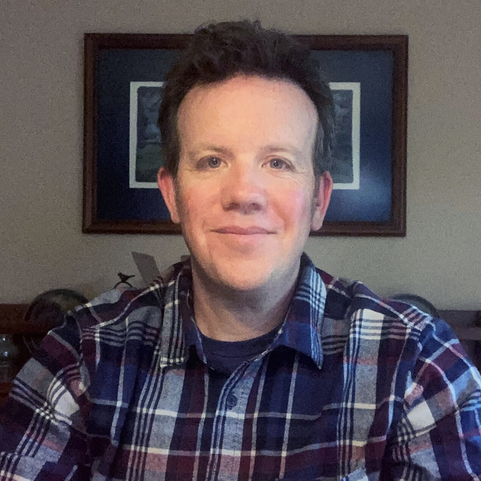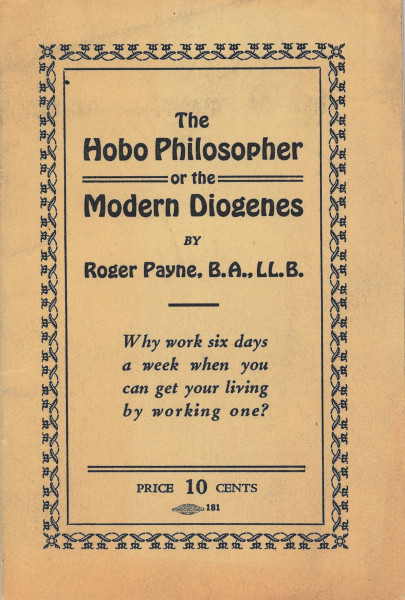Practicums shape student experiences and make dreams come true
 School of Information Sciences student Andrew Wilhelme’s love of history and his “relentless curiosity for information” has been a lifelong pursuit. His father is the former director of the Historical Society of Michigan, and his mother was a librarian at the University of Michigan, so he was predisposed to interest in both history and librarianship. His archival administration practicum placement at the University of Michigan’s Joseph A. Labadie Collection was a dream come true.
School of Information Sciences student Andrew Wilhelme’s love of history and his “relentless curiosity for information” has been a lifelong pursuit. His father is the former director of the Historical Society of Michigan, and his mother was a librarian at the University of Michigan, so he was predisposed to interest in both history and librarianship. His archival administration practicum placement at the University of Michigan’s Joseph A. Labadie Collection was a dream come true.
School of Information Sciences practicum coordinators strive to match students with experiences at information institutions that meet their personal passions as well as their academic and professional goals.
Helping to make the historical record, especially of undocumented and marginalized communities, more accessible to the public is a long-term goal for Wilhelme, so his placement at the Labadie Collection, which specializes in documenting the history of radical political movements and social protest, was a perfect fit.
Read about Wilhelme’s practicum experience in his own words below.
Since I was a teenager, and intrigued by anything that bucked the status quo, I’ve dreamed of one day working at the Joseph A. Labadie Collection at the University of Michigan, which is part of the University Library’s Special Collections Research Center. It was created in 1911 with an initial donation by Joseph A. Labadie, a labor organizer and anarchist from Detroit, of his lifelong collection of newspapers, correspondence, pamphlets and ephemera. My assignment to complete my archival administration practicum at the Labadie Collection, under curator Julie Herrada, made my youthful aspirations a reality.
My goal for the practicum was to get hands on experience working in an archival setting, doing tasks that would help improve its accessibility to the public. My projects were numerous and varied in duration and extent. A common theme throughout was creating description for a variety of types of documents, objects, and other material. I began practicing this skill by adding descriptions to record groups featured on the Labadie Collection’s website. I produced several hundred more, though they were brief, as I prepared a donation of buttons to be digitized and made available online for users to access. My biggest undertaking involving description came when I was tasked with migrating a physical exhibit examining political prisoners and prison activism to an online platform. This entailed writing descriptions of the exhibit’s visual images so that they could be accessed by members of the blind and visually impaired community using screen readers. Lastly, to help prepare the personal papers of prison rights activist and former political prisoner Martin Sostre for digitization and online access, I produced item-level description, and at times transcription, of its contents. Suffice to say, I am now well practiced at the important art of describing archival records.
Other exercises that featured prominent during my practicum were that of research and informational writing. This first popped up when tasked with writing biographies of creators whose collection’s finding aids had not yet been produced. It continued during the prison exhibit project as I was asked to add additional information to its labels – the physical exhibit was constricted by limitations on word count, but the online version was not, enabling me to seek out new and/or more detailed information.

Perhaps the greatest example of this, however, was a post I wrote for the Special Collections Research Library’s blog, Beyond the Reading Room, called “Radical Education: Hobohemia, Slim Brundage and the College of Complexes.” Hobohemia refers to a quarter in Chicago during the early to mid-20th century that was the setting of a counterculture of artists, writers, hobos, union activists, and radicals. For the post I concentrated on an obscure bar owned by a prominent hobohemian, Slim Brundage, called the College of Complexes. This venue hosted an assortment of activities including jazz music, beauty contests, plays, lectures and discussions. Most active in the 1950s, the College of Complexes gave a platform to speakers representing a broad spectrum of political thought and social philosophy, which was unique for a time known for political witch hunts and conformity.
My experience doing my archival administration practicum at the Joseph A. Labadie Collection was both enlightening and enjoyable. Not only did I fulfill a lifelong ambition, I was also able to make a positive contribution to the collection by making it more accessible to users. In return I learned a great deal about the inner workings of an archive and was given many opportunities to get real hands-on experience doing tasks in an archival setting. What’s best is that, though the practicum is now complete, I am going to continue learning new skills at the Labadie Collection as a volunteer for the foreseeable future. My dream of working with records of radicals and rabble rousers continues.